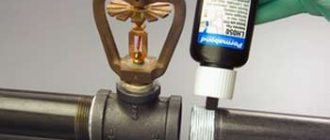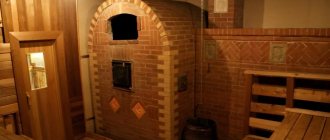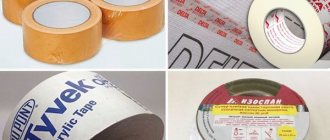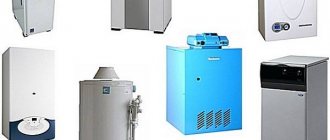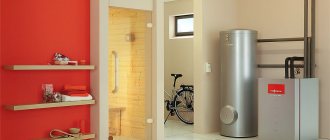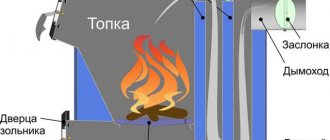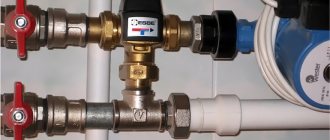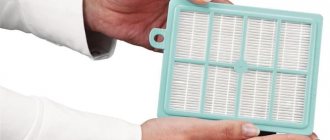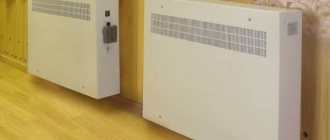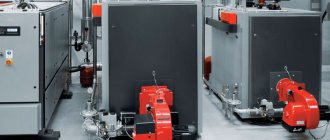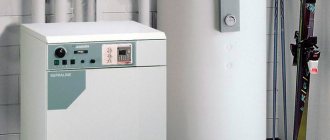The best semi-commercial foam-based linoleum
Semi-commercial linoleum Tarkett Magia Viva is quite a bit different from commercial linoleum. He is not afraid of heels and furniture legs. It is mainly used in rooms with a large influx of people.
The service life depends on the insulating base. The foam base is used in multilayer linoleum.
Its structure consists of several layers:
- The top one is protective. This is a PVC layer that prevents the design from being erased.
- Finishing, plain or with a pattern.
- Basis for drawing.
- Fiberglass, which increases strength, reliability and prevents the material from deforming.
- A layer of foamed polyvinyl chloride.
- The bottom one with all the markings.
Pros:
- Warm.
- Waterproof, easy to clean.
- Hides small unevenness and cracks in the floor.
- It is suitable for rooms with high traffic and can withstand heavy loads.
- Easy to install.
- Withstands high temperatures and does not rot.
Minuses:
- It is not advisable to lay it in a children's room.
- It is sensitive to temperature changes and shocks.
- It cannot be classified as an environmentally friendly material.
Features of linoleum
This material is not as new as it might seem. The first “ancestors” of linoleum appeared in the 18th – 19th centuries. Then these floor coverings had a fabric base and were modified with natural materials (wax, linseed oil and other additives). With the development of the chemical industry, the vast majority of linoleums began to be produced on a polymer basis.
In the wake of interest in environmentally friendly materials, natural linoleum is still being produced, but this product remains niche and is inferior to polymer products in terms of physical and technical parameters.
Advantages of linoleum
- Price – among all finishing floor coverings, linoleum is the most affordable. The material can be found at a price of 250 rubles per sq. m. It should be understood that these products belong to the household class with low abrasion resistance. More stable coatings will cost more.
- Easy to install. Linoleum is considered the easiest flooring to install. In fact, you just need to spread it out and press it with baseboards.
Over a large area, linoleum is also glued to prevent waves and folds from forming.
- Moisture resistant. If we compare linoleum with its main “rival”, laminate, then it is not afraid of water. For this reason, polymer coatings are often used in hallways, kitchens and other places where there is a high risk of liquid getting on the floor.
- Low requirements for the quality of the base - if the screed is not made very well, then linoleum can hide small pits and bumps, which, for example, a laminate cannot do.
The base for the laminate should have differences of no more than 2 mm per 2 meters.
Flaws
- Low maintainability - the entire blade needs to be replaced if a single section is damaged. It is impossible, like with tiles or laminate, to change a small fragment, and patches on linoleum usually look unaesthetic.
- Problems when laying in rooms of complex shape - linoleum is usually laid in a single square-shaped sheet. On floors with complex contours, the amount of scraps increases.
- Lifting and transportation. It is always recommended to take linoleum in one sheet. In this case, it can be laid without joints and welding of parts. If you buy cut fabric, the pieces may come from different batches, they may have different colors and tones. At the same time, a single roll usually has a width of 4 - 5 m; it is difficult to carry it into an elevator or drag it up the stairs.
If you can’t bring in a wide roll of linoleum, you can buy a whole sheet, but cut it before entering the entrance.
- Poor imitation - often linoleum is styled to resemble other types of coatings (laminate, parquet), but in most cases the result differs from the original. When we look at the floor, we will still understand that this is not ceramic tiles, but a pattern on a PVC sheet.
The best semi-commercial linoleum for the kitchen
Tarkett Sinteros can withstand heavy loads. Installation does not require special knowledge and skills: you just need to lay it on the floor and let it lie for a day.
Advantages:
- Affordable price. Its cost is much lower than that of tiles or other coatings.
- Quality. It withstands animal claws and does not leave holes in furniture.
- Heat resistant and waterproof.
- Strength. It lasts a long time because it consists of several layers.
- Soundproofing. Prevents noise from spreading in the room.
Flaws:
- Synthetic base. If there are people in the family who suffer from allergies, it should not be laid.
- Sometimes it is necessary to treat with a special mastic.
The process of laying linoleum with pile
This type of coating requires specific attention. It should be noted that choosing linoleum is a simple matter, because they choose it for a long period of time. The material has a two-cavity structure, which affects the characteristics of linoleum and its performance.
Linoleum with pile is perfect for those who love warmth, comfort and coziness: it is soft, elastic and easy to cover the floor surface with.
But it is worth noting that this material can only be laid in a dry room, since moisture can destroy the structure of linoleum and render it unusable. If the floor experiences heavy loads, it is likely that linoleum with pile may not withstand it. Therefore, before purchasing, it is important to take into account all the nuances and characteristics of the room in which linoleum is to be laid.
Laying linoleum is not difficult, the main thing is to approach this process correctly
How to prepare the floor:
- Remove old coating. Assess the condition of the floor without it. The finish must be good, otherwise repair work will need to be carried out.
- Lay a substrate that will serve as a transition layer. It is better to choose the jute option - it has a natural base.
- Covering the floor with plywood sheets will give the surface strength.
- Carry out waterproofing if the floor is covered with wood. To do this, put a film on it. Cover it with fiberboard, prime it, and cover it again with film.
Related article: Do-it-yourself shower cabin
The film floor is laid on top of this entire floor structure. Experts do not advise laying chipboard under linoleum - this is a rather fragile material that can lead to the failure of the floor. Linoleum with pile is perfect for dry living spaces with normal humidity levels.
The best antistatic semi-commercial linoleum
Antistatic coating Top Exstra is well suited for various substrates and has a wide range of applications.
Advantages:
- Does not require effort in installation and operation.
- A price accessible to every client.
- Resistant to impacts and abrasion.
- Moisture-resistant and resistant to all chemical compounds.
- Non-slip surface.
- Fireproof.
Flaws:
- In most cases, a synthetic base.
- To extend its service life, sometimes the flooring requires treatment with a special mastic.
The best semi-commercial linoleum without a base
Juteks Optimal Bourbon is very thin - its thickness is no more than 1.6 mm. On baseless linoleum, the pattern is located throughout its entire thickness, thanks to which it does not wear out.
Advantages:
- Does not require experience or effort in installation.
- Waterproof.
- Suitable for rooms with high traffic volumes.
- Withstands impacts, wheels from gurneys, and does not leave marks from furniture.
- It is soundproofed.
- Affordable price.
- Has a range of colors to suit every taste.
Flaws:
- If it is not covered with special mastic, its service life will be 5-7 years.
- It doesn't retain heat.
Types of linoleum without a base
There are three types of linoleum coating, which do not have an additional bottom layer in their structure.
- Relin. Rubber coating consisting of two layers. The bottom shock-absorbing layer is made of rubber crumb mixed with bitumen, and the top layer is rubber containing pigments that serve as a coloring composition.
Relin flooring with a two-layer structure
- Baseless PVC linoleum. The most common type of linoleum, which is used both in domestic conditions and in public places with average traffic. Mounted on a special substrate. The base under it needs to be well leveled.
- Colloxylin. It is otherwise called nitrocellulose because cellulose is used in its production. It has a characteristic shine and resistance to moisture.
Linoleum without a backing is in demand for the simple reason that its price is much lower compared to coatings equipped with a second layer. However, installation of such material is more difficult: you need to carefully prepare a flat base and use an additional layer of backing. Therefore, the final cost of materials and work can exceed the installation of coatings with a base.
The best semi-commercial heterogeneous linoleum
Alex-3 LUX has a more complex base. It has a service class of 33 with a protective layer of 0.15 mm. The structure reaches six layers, the thickness of the homogeneous coating is 2 mm. The width of flooring rolls reaches 1.5-5 m.
Advantages:
- Reasonable price.
- Waterproof.
- Does not require special knowledge for installation.
- It is soundproofed.
- Long service life.
Flaws:
- Synthetic base.
- To extend the service life, the floor covering must be treated with a special mastic.
The best homogeneous semi-commercial linoleum
Jutecs Falco is produced in strength class 33 with a protective layer of 0.2 mm. Its pattern is applied to the entire thickness of the PVC. It is made of solid fabric with the addition of PVC granules and dyes.
Advantages:
- Easy to install, does not require special knowledge or effort.
- Reasonable price.
- Waterproof.
- Soundproofing.
- Withstands heavy loads.
Flaws:
- The width of the roll is 2 m; if the room is a little wider, you will have to cover the floors with a seam.
- If it is not treated with special mastic, its service life will become shorter.
The best semi-commercial linoleum for home
Semi-commercial linoleum for home Tarkett Idyll Nova CHARLSTON consists of five layers:
- PVC, which is responsible for quality.
- Pattern layer.
- A polyurethane layer that creates a durable base, sound insulation and waterproofing.
- The frame throughout the entire structure is fiberglass. Then the remaining layers are attached to it.
- The backing is made of foamed PVC; felt or jute is less common.
Advantages:
- Long service life.
- Reasonable price, accessible to everyone.
- Keeps warm well.
- It has excellent sound insulation, absorbs steps and noise.
- It is easy to care for and can be easily placed on the floor.
Flaws:
- Synthetic base.
- If it is not treated with special mastic, its service life will be shortened.
↑ Warm-based linoleum
Warm-based linoleum is more resistant to moisture and mold
The development of modern technologies in construction has made it possible to create multilayer materials that combine various characteristics, and warm-based linoleum is no exception. This coating consists of 5 – 6 layers, each of which performs its own role.
The basis of this linoleum is foamed rubber or a combination of foamed vinyl and polyester. These materials make linoleum extremely elastic and resistant to heavy loads. It has high tensile strength, resistance to tearing and shrinkage, and excellent resistance to high humidity.
The second layer is fiberglass, it ensures the integrity and strength of the entire canvas. Foamed PVC and a decorative layer with a pattern are applied on top of the fiberglass, which is protected by a wear-resistant working layer. Thanks to this multilayer structure, linoleum has acquired excellent heat and sound insulation qualities, and has become resistant to high humidity and mechanical stress.
The best semi-commercial linoleum with a protective layer of 0.5 mm
To increase the strength of the flooring, Tarkett Pastoral Nelson adds some useful substances to the protective layer:
- EXSTREME PROTECTION – increases strength up to seven times.
- TITANIUM is added for an additional varnish layer.
- TUREX gives the pattern a natural effect.
Semi-commercial linoleum "Pastoral Nelson" is recommended to be joined at the joints by cold welding.
Advantages:
- Reasonable price.
- After installation, a minimal amount of waste remains.
- Has good thermal insulation and sound insulation.
- Quite a long service life.
Flaws:
- Synthetic base.
- To increase its service life it must be treated with a special mastic.
The best semi-commercial linoleum with a protective layer of 0.7 mm
Tarkett Force with a protective layer of 0.7 mm, insulated on a foam base, 2.5 mm thick.
If you look at it in cross-section, you can see six layers:
- PVC, which is responsible for the quality of the coating.
- Pattern.
- Polyurethane is a layer that creates sound insulation and water resistance.
- Fiberglass, which creates the frame for the entire structure. All other layers are attached to it.
- Foam layer.
- Substrate. It comes with foamed PVC with the manufacturer's seal.
Advantages:
- Reasonable price.
- Does not require special knowledge or effort for installation.
- Waterproof, soundproof and heat insulated.
Flaws:
- Synthetic base.
- To increase its service life, it must be coated with a special mastic.
What is foamed linoleum
The coating consists of several layers firmly connected to each other:
- The top one is a protective film that facilitates maintenance and prevents premature abrasion.
- Finishing layer with a pattern.
- Top foam layer.
- Fiberglass, which gives the coating strength and the necessary rigidity.
- Bottom foam layer.
The foam layer can be applied to fiberglass by mechanical or chemical means. With the mechanical option, many cavities are formed inside the formation, communicating with each other. Under external mechanical influence, air is squeezed out of some cavities and moves into others. As a result, dents and defects form on the surface that cannot be restored.
With the chemical method, the cavities are closed , so the air remains inside. After the pressure is removed, such linoleum restores its shape and the dents are leveled out. This material will be more expensive, since expensive special foaming agents are used in its production.
When purchasing, it is advisable to choose a coating width such that there are a minimum number of joints. Before final installation, the linoleum must be spread and left for a day. The coating is sold in rolls, so it takes time to straighten out. The joints can be soldered together or taped.
Although linoleum hides cracks and defects in the floor due to its thickness, it is worth leveling and repairing large uneven areas on the rough surface. This will extend the service life and allow you to maintain the aesthetic appearance of the floor longer. In some cases, laying foam linoleum becomes an alternative to “warm floors”.
The best semi-commercial felt-based linoleum
Semi-commercial linoleum from Tarkett Idilia Nova is well suited for all premises. It consists of a protective layer 0.5 mm thick, glued to a felt base.
The thickness of the entire coating is 3.5 mm. It is elastic, soft, pleasant to walk on, and this is the best option for children's rooms.
Advantages:
- First of all, the price is reasonable.
- Soft, warm and pleasant to walk on.
- It has sound insulation and thermal insulation.
Flaws:
- Unstable top layer.
- Can't withstand blows.
- Do not lay in rooms with high humidity.
- Short service life.
The best semi-commercial linoleum for parquet
Tarkett Discovery linoleum will visually replace a wooden floor. Its thickness is 3.5 mm and its weight is 2.5 kg.
When choosing a coating, you should pay attention to the markings and meanings of the numbers in the entries:
- The first is in what room it is desirable to use it (2 – residential, 3 – office, 4 – industrial).
- The second is the load withstand.
Advantages:
- Reasonable price.
- The coloring completely imitates the texture and structure of a wooden floor.
- Waterproof, thermally insulated and soundproofed.
- Long service life.
Flaws:
- Synthetic base.
- Sometimes it requires coating with a special lubricant.
The best semi-commercial fireproof linoleum
The base of Juteks Trend consists of foamed PVC; linoleum on a felt or jute base is less common. There are groups by which the degree of combustion is determined:
- G1 – slightly flammable.
- G2 – moderately flammable.
- G3 – normally flammable.
- G4 is highly flammable.
Non-flammable flooring is marked G1 and should be used on escape routes.
Advantages:
- Non-flammable coating.
- Affordable price.
- Waterproof.
- Requires no effort during installation.
Flaws:
- Synthetic base.
- Sometimes it requires coating with a special mastic.
Examples of insulated linoleum (photo)
The best posts
- Construction of a gazebo from pallets: detailed and simple for everyone
- Inserting hinges with a router: video of adjustment and installation
- Cross stitch of landscapes in large sizes: patterns for free, sea and winter, city and country, small monochrome, sets for autumn, summer and spring
- How to choose the right laminate for your doors?
- Gift paper cake. Box template
- Summer kitchen in the country: interesting solutions
- What you can save a lot on when decorating a room [we reduce the cost of finishing]
- A simple homemade charger for car batteries with your own hands
The best regular semi-commercial linoleum
The most common type of semi-commercial linoleum is Tarkett Force Avatar . It is mainly used in production and at home. There are no traces of furniture left on it.
Thanks to the pattern, which is applied over the entire thickness of the coating, you can inexpensively and efficiently lay a floor over a large area.
Advantages:
- Reasonable price.
- Long service life.
- Suitable for rooms with heavy loads.
- High resistance to wear and tear.
- Waterproof.
- Requires no effort during installation.
Flaws:
- Synthetic base.
- Requires coating with special lubricant.
The best insulated semi-commercial linoleum
The Trend insulated covering is based on foamed PVC on a felt base, 3 mm thick and with a protective layer of 0.2 mm. It is used in rooms with heavy loads. It leaves no marks from furniture and can withstand impacts.
“Trend” is warm and soft, thanks to these qualities it is pleasant to walk on and can be used in the bedroom.
Advantages:
- Affordable price.
- Warm and pleasant to walk on.
- Does not require much effort during installation.
- Long service life.
Flaws:
- Due to the felt base, it is not advisable to lay it in rooms with high humidity.
- Requires coating with special mastic.
Advertising from sponsors: // // //
Insulated
It is affordable and convenient. The product is made in two layers - the base itself and the working surface. The base is felt or jute.
Polyvinyl chloride is a working surface. If you foam it, you get a durable product. Its distinctive features are softness, elasticity, and lightness. It can be quickly installed in two different ways: with or without glue. The building material also has excellent thermal insulation and sound insulation qualities.
Despite these advantages, felt products have many disadvantages:
- The working surface has a fairly low level of strength. It can be damaged without any problems. Operation must be careful.
- Due to jute or felt, building materials may lose their performance characteristics after a certain period of time. Particularly those areas with the greatest traffic are beginning to deteriorate. The base begins to become thin, even if it is Tarquette linoleum on a felt base.
- Felt-based linoleum should not be used in rooms with a high content of water vapor, because it does not have waterproofing characteristics. The base is made from products that are of natural origin and “afraid” of moisture. After a certain period of time, you may notice the appearance of fungus or mold under the work surface.
These are the disadvantages of felt.
Now it is difficult to find on the construction market something that has a base made of jute or felt. It is rapidly being replaced by a warm-based product.
